Welcome to week 2!
Before we start any exercising, we want to be sure that everyone stays safe. This is our advice and please think about it every time you start to exercise.
If you haven’t done much physical activity for a while, begin at a low intensity to make sure you don’t injure or overly tire yourself.
If you don’t feel confident about your balance while you are standing up, then support yourself by holding on to a kitchen counter or a heavy piece of furniture such as the back of a sofa or a chest of drawers. Or if you would rather start exercising sitting down, that is OK as there are many exercises you can perform while sitting.
Make sure you have a safe area to exercise in with no rugs or mats that could move causing you to slip. Wear shoes with good grips and loose-fitting comfortable clothes. When you use a kitchen or dining chair to exercise place it against the wall so it cannot tip.
Creating daily habits
In this unusual time, it will be useful to create new daily physical activity habits. Building exercise into your day can help you develop a routine and a purpose. This is something positive we can do that will have genuine benefits that we can see and feel.
So decide what time of day is a good time for you to exercise, maybe set an alarm as a reminder, and see if you can work through these exercises every day.
Warming up
It is important to prepare your body for exercise. To warm up you could march on the spot in the house (perhaps to music you enjoy), you could walk up and down the garden, or go for a walk outside. (Keeping social distance of course!)
Wherever you chose to walk, do it for at least ten minutes, until your body feels a little warmer, your heart is beating a bit faster and your breathing rate is higher than when you rest. If you are worried about your balance walk on the spot while holding on to a counter top, the back of a sturdy sofa or chest of drawers.
Keeping-up balance
We do not need us to tell you that balance is important. However, when we are inactive, the balance muscles quickly become weak. To avoid stumbles around your house and garden, make sure to keep up the following exercises:
Tight Rope
Walking forwards placing one foot directly in front of the other. Have access to furniture (i.e. kitchen worktop) to aid balance when necessary.
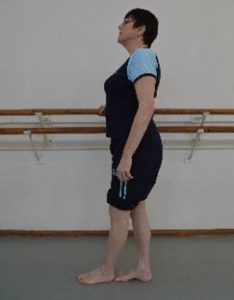
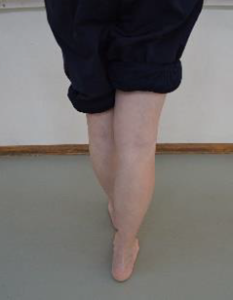
Single-Leg balance with knee lift
Position yourself near a stable surface (like the back of a chair or tabletop) in case you need to hold on to it. Stand on one leg and slowly lift the other knee upwards and in front of you towards hip height. Try holding this position for a short period of time (5 to 20 seconds) and then swap legs.
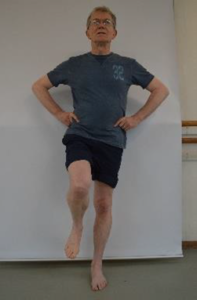
Sideways Cross Step
Stand facing a kitchen worktop or dining room table and slowly step one foot across the front of the other so you begin moving in a sideways direction. The aim is to move as smoothly as possible.
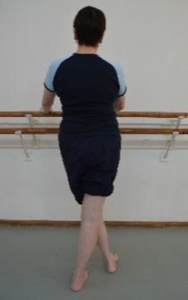
Leg strength
The strength in our legs is what gives us independence. Walking to the shops, gardening and stepping on to a bus all require good leg strength and this strength will quickly fade if we do not use it. To keep your legs strong and able to help you enjoy life, make sure to practice the following exercise.
Step up
Using either the stairs in your house or a step, ensure you have access furniture to hold onto to aid balance. Try to push your weight towards the back of the foot when stepping up.
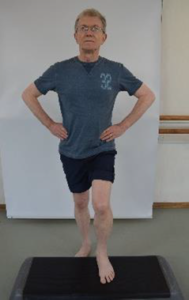
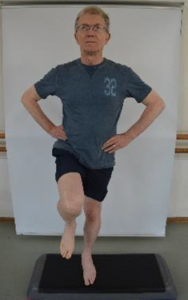
Sit to stand
When standing up, start by using your hands to push against the arms of a chair. Over time rely less on your arms and more on your leg muscle to stand. Do this near a kitchen worktop or other sturdy piece of furniture so you can steady yourself if necessary.
Try performing 3 in a row, followed by 3 minutes rest before repeating another 3 repetitions as a starting point.
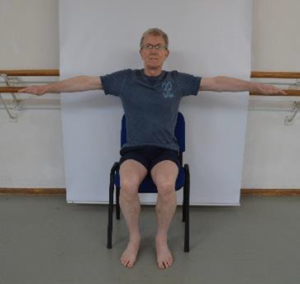
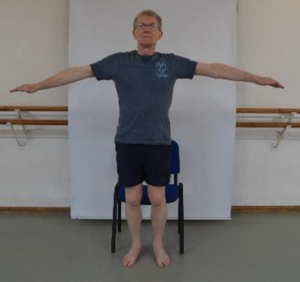
Calf Raises
Using a chair or table for support, bring your body weight towards the front of your feet and raise your heels off the floor.
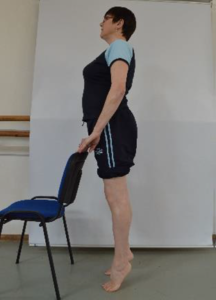
Cooldown
After your exercise session, which may last anything from 10 minutes to an hour (that is up to you and how much energy you have), it is good to spend a few minutes stretching and cooling down. Here are a few tips for a quick cool-down routine:
- Breathe: Take a few deep breaths to calm your breathing if it is a bit faster than normal.
- Gentle stretches: Sitting down, gently stretch out your arms and legs one at a time.
- Keep moving: Keep moving slowly, perhaps marching on the spot, until your heart rate and your breath have returned to your normal resting state.
So, for this week just start trying out these exercises, repeating each one a few times. Next week we will think about your upper body strength and how to safely progress as you get stronger.
Stay safe and keep moving!
Janet, Afroditi, Jolanthe and Pete
Dr Janet Withall, REACT Trial Manager, University of Bath
Dr Afroditi Stathi, REACT Chief Investigator, University of Birmingham
Dr Jolanthe de Koning, REACT Research Associate, University of Bath
Dr Pete Ladlow, UK Defence Medical Rehabilitation Centre
